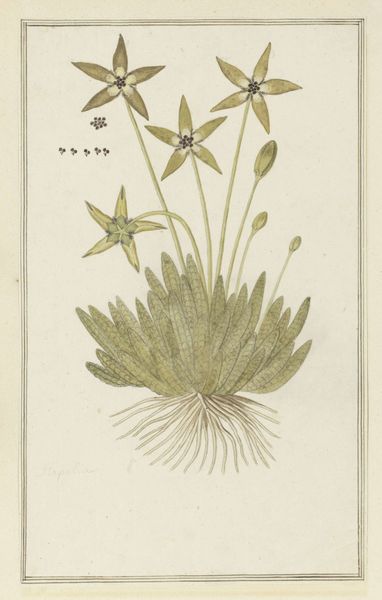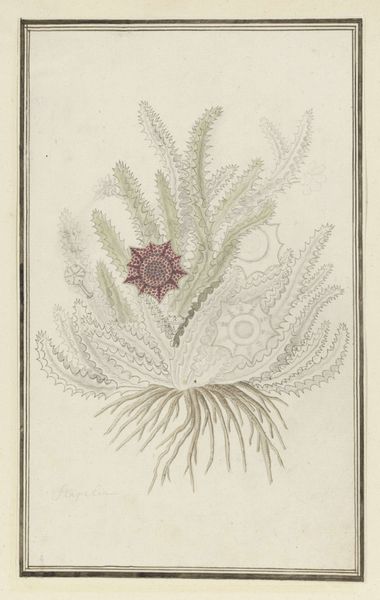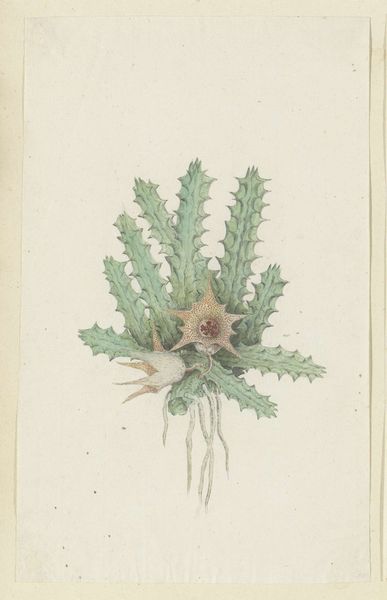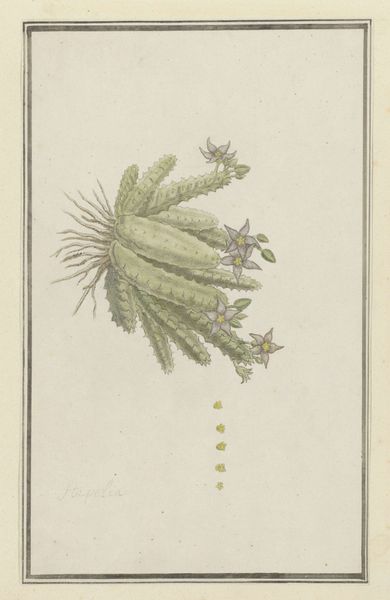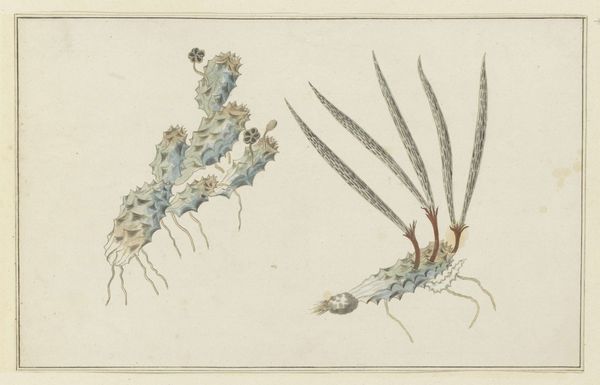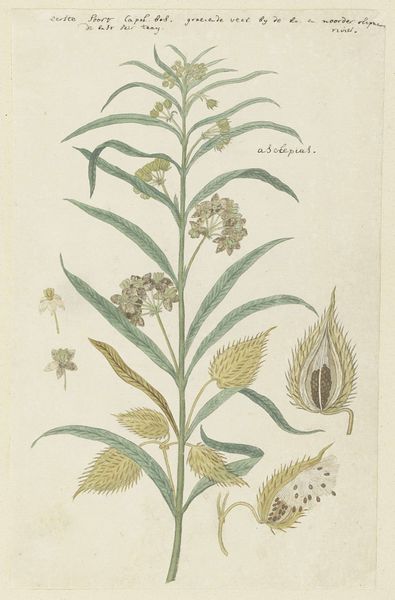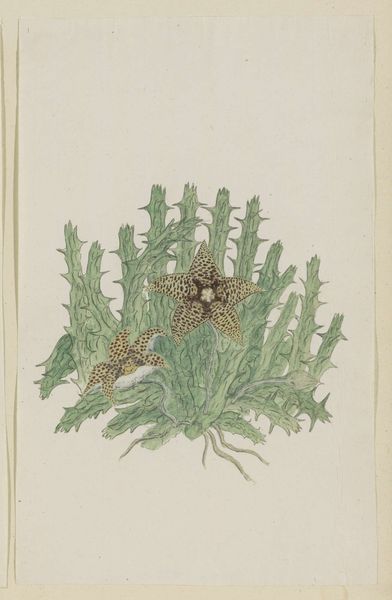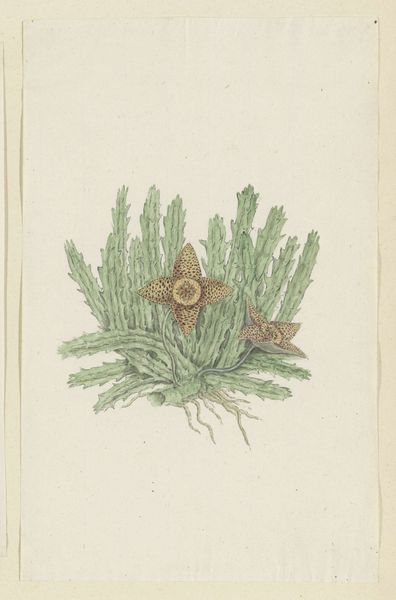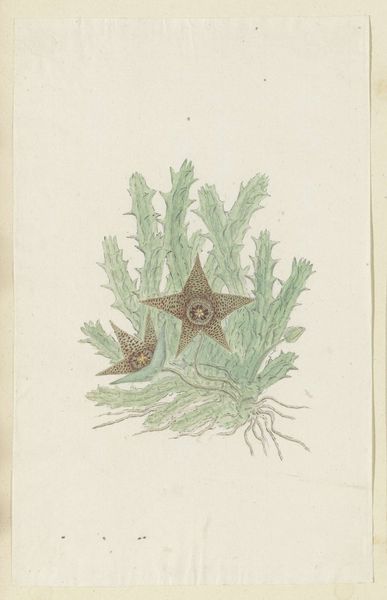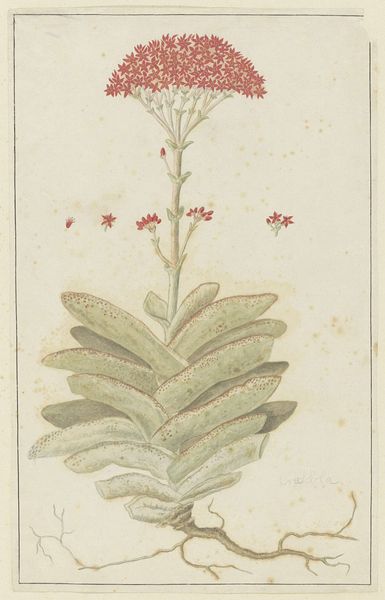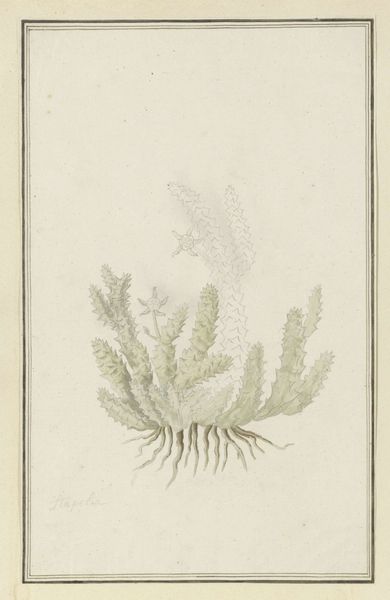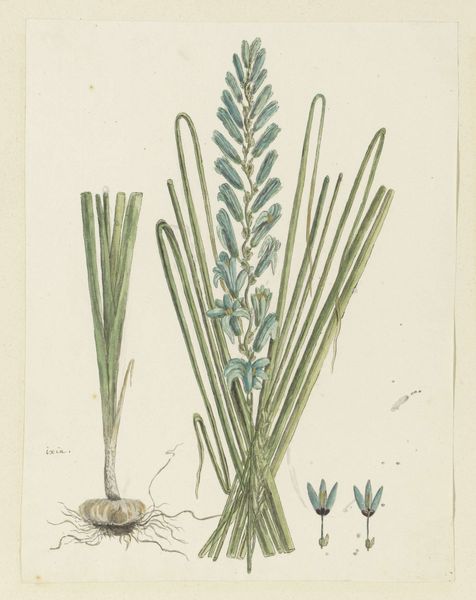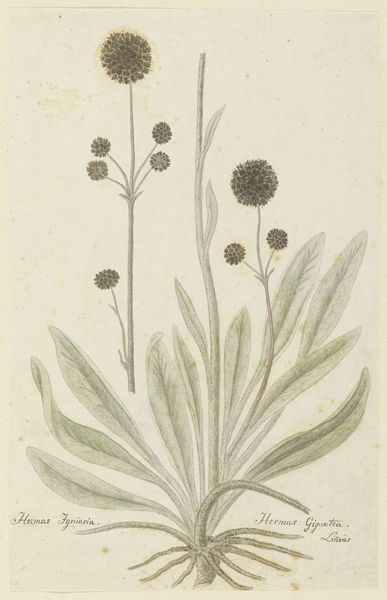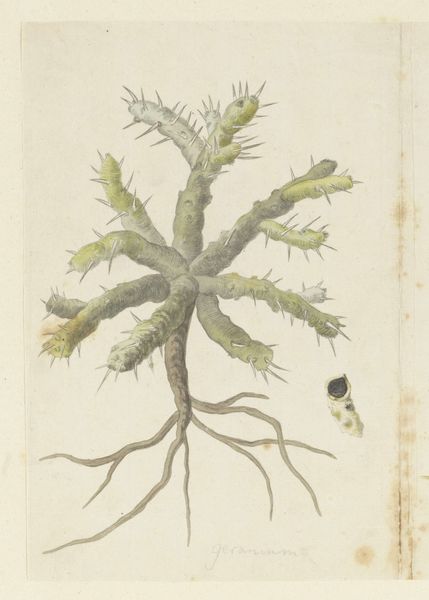
drawing, plein-air, watercolor
#
vegetal
#
drawing
#
toned paper
#
plein-air
#
landscape
#
botanical illustration
#
curved letter used
#
watercolor
#
botanical drawing
#
watercolour bleed
#
watercolour illustration
#
botanical art
#
watercolor
#
realism
#
warm toned green
Dimensions: height 660 mm, width 480 mm, height 308 mm, width 195 mm, height mm, width mm
Copyright: Rijks Museum: Open Domain
Curator: Let’s turn our attention to this rather charming, if slightly prickly, watercolor and ink drawing. This is Robert Jacob Gordon’s *Hoodia gordonii (Bushman’s hat)*, likely rendered between 1777 and 1786. What's your take on it? Editor: My first thought? Unexpectedly delicate. Given the subject matter, the spiky cactus, I was prepared for something harsher, bolder. Instead, there’s a gentle fragility to it, like a whisper. Curator: I think that whisper comes from Gordon’s obvious care in capturing the plant’s details, especially the subtle watercolor bleed which gives the flowers that wonderful translucence. He was quite dedicated to botanical accuracy during his travels. Imagine the meticulous observation required! Editor: Exactly! And observe that creamy, toned paper — almost begging you to consider the paper-making process. Thinking about the labor that went into both the plant itself, its growth, its adaptations, and then, all the way to Gordon meticulously painting with watercolors… Curator: It also feels so perfectly…*contained*. Everything is presented so cleanly and objectively; even though Gordon was an explorer, the romantic impulse, thankfully, stays subdued, and that helps you feel you're observing nature without too many layers of interpretation. Editor: Agreed. The act of botanical documentation always strikes me as complex, a mixture of science and colonial ambition. The very choice of the toned paper – probably selected to offer enhanced contrast and durability in the field – tells you a lot. This wasn't some idle studio exercise. The paper had a purpose, a life beyond the artwork. Curator: It truly embodies the intersection of art, science, and exploration. The desert plant becomes more than a drawing; it's a study. The inscription "Stapelia" at the lower right further transforms it into a historical document, hinting at shifting taxonomies and classifications of the time. Editor: Right! And it’s all there—consumption, collection, colonial expansion. The "Stapelia," as it’s inscribed at the lower left corner of this artwork. Words denoting labor that have evolved and shifted as cultural knowledge gets built and transformed in unexpected ways. Curator: I think, ultimately, Gordon’s study reminds us of how deeply intertwined observation, representation, and human ambition can be. Editor: Leaving one with a bittersweetness, like chewing on an age-old root: how much beauty do we extract, while sometimes plundering from Earth’s delicate abundance?
Comments
No comments
Be the first to comment and join the conversation on the ultimate creative platform.
